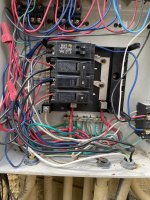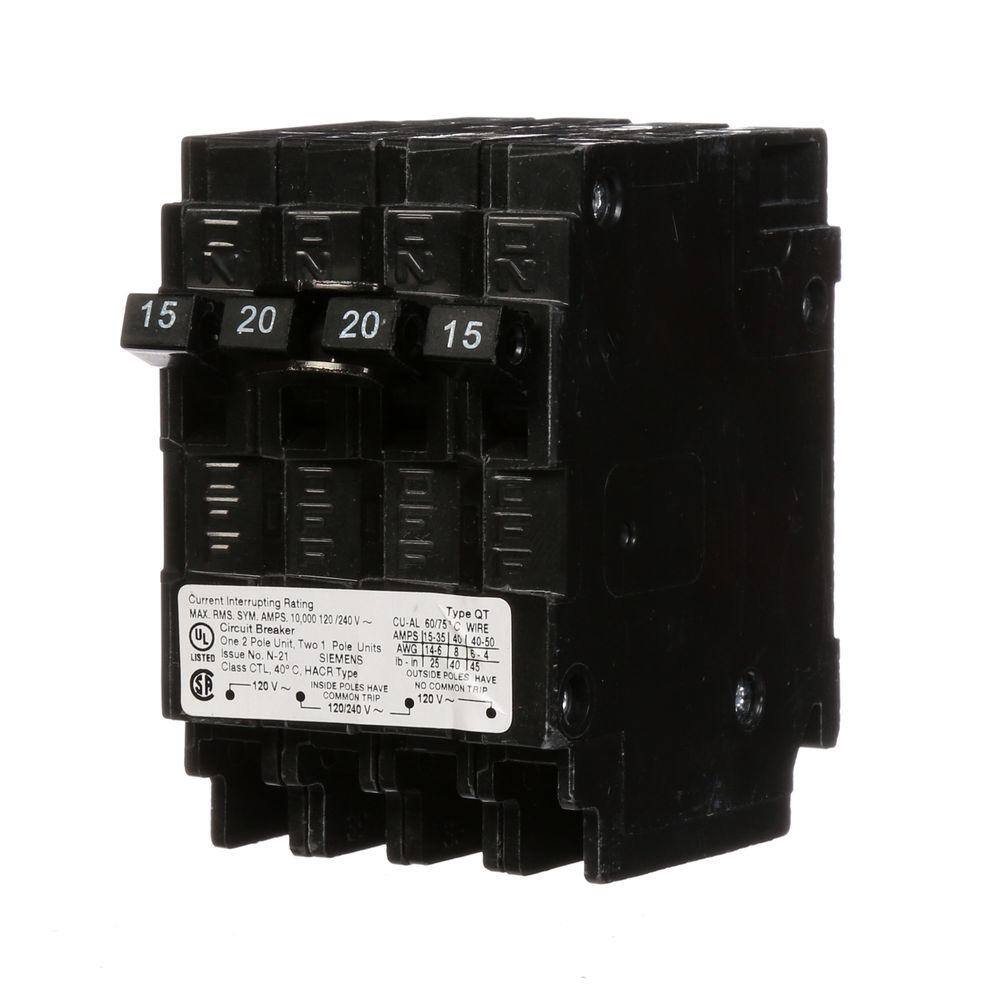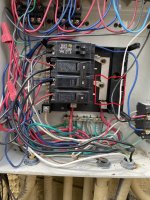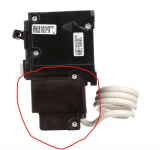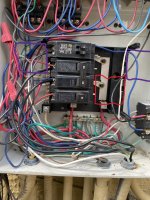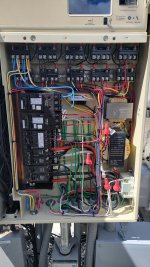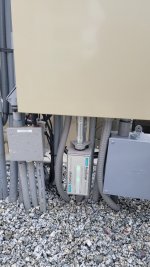When I bought my house a few years back, the pool panel had a Type 2 Intermatic surge protector installed (model IG1240RC3). I bought a new one a few years ago when the 1st one failed, and I replicated the same installation, but I am not sure the 1st one was installed correctly. Instead of being attached directly to the box, it is beneath the panel. I can easily fix that. The other issue is that the installation instructions (attached) ask to connect it to a dedicated breaker. My problem is that I do not have any space left (see picture of my panel). The top dual breaker is for 2 ceiling fans installed in my patio, the middle breaker is for the pool and heater, and the lower breaker is for my Jandy PCB. The surge protector is currently connected to the pump breaker. I am going to call Intermatic to ask whether the current installation (same breaker as the pump) is OK, or whether that makes the surge protector useless.
I have 2 questions:
- Does anyone have a surge protector installed in a configuration similar to mine, and can you suggest a surge protector that will work with limited space
- Is there a way to protect the PCB -- I have lost 2 PCBs to power surges and would like to protect it.
Thanks!
Anthony
I have 2 questions:
- Does anyone have a surge protector installed in a configuration similar to mine, and can you suggest a surge protector that will work with limited space
- Is there a way to protect the PCB -- I have lost 2 PCBs to power surges and would like to protect it.
Thanks!
Anthony


